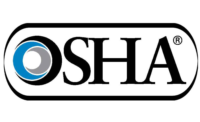Teton Steel of Montana is a premier reinforcing steel outfit located in Billings, Montana. This employee-owned and locally run company is dedicated to serving their customers, which range from the individual looking to complete a driveway to the huge corporate manager building a super highway. The product line includes rebar, wire mesh, forming ties, roof hatches, wire mesh partitions, and access doors. Teton Steel is a subsidiary of Dalco Industries based in Colorado.
The company had previously brought in a safety consulting company to provide annual safety training and yard inspections. However, when the consultants found fewer and fewer issues during their inspections, Teton Steel wanted a new set of eyes on the worksite. They contacted the Montana Department of Labor & Industry Safety & Health Bureau (SHB), Consultation Program, requested a visit, and had their safety and health programs evaluated and a hazard assessment conducted.
Teton Steel became aware of the Occupational Safety and Health Administration (OSHA), On-Site Consultation Program, by attending a SafetyFestMT training conference held in Billings, Montana, in October 2017. The On-Site Consultation Program offers no-cost and confidential occupational safety and health services to small and medium-sized businesses in all 50 states, the District of Columbia, and several U.S. territories, with priority given to high-hazard worksites. On-Site Consultation services are separate from enforcement and do not result in penalties or citations. Consultants from state agencies, such as the Montana Department of Labor & Industry, SHB Consultation Program or universities, work with employers to identify workplace hazards, provide advice for compliance with OSHA standards, and assist in establishing and improving safety and health programs.
Montana DLI consultants identified only two hazards during the December 2017 walkthrough of the Teton Steel facility:
- Stacked material greater than four feet (4') above ground level used as a working surface without a personal fall protection system.
- Employees exposed to an uncovered openings in a circuit breaker in the chemical storage shed.
| Employees had been doing their jobs the same way for many years and change was not widely accepted at first. |
The company took a proactive approach to correcting both hazards. Jason Baer, Teton Steel's Safety Coordinator, conducted training sessions on both hazards. The fall protection hazard was abated by implementing a fall protection system, which included a harness and lanyard. The uncovered openings in the circuit breaker were abated by installing approved covers.
A number of business practices changed after the first consultation visit. A company policy was developed and implemented to allow only certain employees to work at heights for which fall protection is needed. Employees became increasingly involved during periodic hazard inspections. This approach has increased the number of hazards identified and abated at the workplace.
Improving workplace safety has had positive impacts in a number of areas. One of the challenges Teton Steel faced was increasing employee commitment for new and safer ways of conducting their job. Employees had been doing their jobs the same way for many years and change was not widely accepted at first. Another challenge was implementing a hazard reporting system. Employees required training to find hazards, so that they could be reported properly and abated in a timely manner. Encouraging management and employee participation in identifying safe acts, unsafe acts, unsafe conditions and incidents that occur at the facility has given everyone a sense of ownership in this important facet of daily interactions. By including employees in the hazard identification process, the value of monthly safety meetings has also increased.
Teton Steel earned OSHA Safety and Health Achievement Recognition Program (SHARP) status in March 2018 and has demonstrated that when businesses make workplace safety a priority, people take notice. This program recognizes small business employers who have used OSHA On-Site Consultation Program services and operate exemplary safety and health programs. Acceptance of a worksite into SHARP from OSHA is an achievement of status that singles the company out among its business peers as a model for worksite safety and health. By participating in SHARP, Teton Steel has improved the recognition of management and employees who make safety a priority. The company has increased staff participation to invent new ideas and to continually improve the safety culture.
"Working with the On-Site Consultation Program has improved our hazard identification skills," said Baer, "and it has increased the discussion about implementing best practices throughout the workplace." Employees have an enhanced understanding of the impact on safety and health in the workplace and their hard work has paid off and has increased employee participation in all aspects of the company.
To participate in SHARP, a company must have injury and illness rates below the national average. In 2016 and 2017, Teton Steel's total recordable case (TRC) and days away, restricted, and transferred (DART) rates were zero. During this period for NAICS code 331210, the Bureau of Labor Statistics reported that the industry average TRC rate was 5.10, and the industry average DART rate was 2.75. [Note: For 2018, Teton Steel's TRC and DART rates remained at zero; however, BLS injury and illness data are not available for that year.] Teton Steel received the highest marks possible during its SHARP evaluation and has gone almost 8 years without an incident – a feat that is almost unheard of in this high-hazard industry.
On-Site Consultation and SHARP are voluntary programs. To locate the OSHA On-Site Consultation Program nearest you, call 1-800-321-OSHA (6742) or visit www.osha.gov/consultation.
Source: Jason Baer, Safety Coordinator, Teton Steel of Montan


